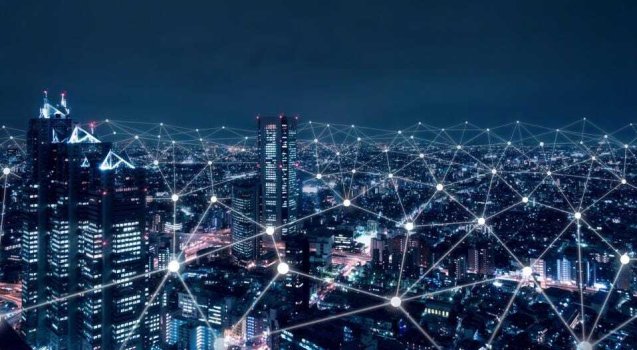There is a tension at the heart of how we build our world. We want our buildings and infrastructure to last. The projects we’re starting today are supposed to be standing 20 or 30 years from now. We also need to reduce our emissions on a massive scale in the same timeframe. But the infrastructure we’re designing today is not ready for the zero-carbon world of 2050.
There is a tool that can help us get there: artificial intelligence (AI). It’s often used as a buzzword, conflating a wide range of algorithms in computer programming. But the ability of AI, and specifically machine learning, to recognize patterns and respond instantly might be the key to a future of sustainable infrastructure.
Here’s a simple example: turning lights off and thermostats down. This might be easy to do in individual households, but it’s a much more complex task for commercial buildings, 75 percent of which are not managed as efficiently as they could be. Facilities teams often need months to create models that can interpret sensor data and adapt lights and heating to work around the ebb and flow of occupants. AI systems can figure out these patterns within days, and respond to changes in those patterns just as fast.
Early warning for resilient grids
It’s not just buildings that can benefit from AI. With superior detection capability powered by machine learning, our power grids can become much more environmentally friendly, too. One of the lesser-known problems for grids is the occurrence of high-impedance faults, where a power line meets an object like a tree branch. This can easily cause forest fires that destroy entire ecosystems. Such faults are incredibly hard to detect simply because the lost power is so small that traditional systems don’t pick them up as critical. AI systems could identify a high-impedance fault by analyzing changes in the power flow of the grid. Siemens is currently working on exactly that kind of tool, which could act as an early warning system and prevent forest fires.
Continue reading: https://www.forbes.com/sites/siemens-smart-infrastructure/2022/08/25/why-we-need-ai-for-sustainable-infrastructure/?sh=638092eb2da6
There is a tool that can help us get there: artificial intelligence (AI). It’s often used as a buzzword, conflating a wide range of algorithms in computer programming. But the ability of AI, and specifically machine learning, to recognize patterns and respond instantly might be the key to a future of sustainable infrastructure.
Here’s a simple example: turning lights off and thermostats down. This might be easy to do in individual households, but it’s a much more complex task for commercial buildings, 75 percent of which are not managed as efficiently as they could be. Facilities teams often need months to create models that can interpret sensor data and adapt lights and heating to work around the ebb and flow of occupants. AI systems can figure out these patterns within days, and respond to changes in those patterns just as fast.
Early warning for resilient grids
It’s not just buildings that can benefit from AI. With superior detection capability powered by machine learning, our power grids can become much more environmentally friendly, too. One of the lesser-known problems for grids is the occurrence of high-impedance faults, where a power line meets an object like a tree branch. This can easily cause forest fires that destroy entire ecosystems. Such faults are incredibly hard to detect simply because the lost power is so small that traditional systems don’t pick them up as critical. AI systems could identify a high-impedance fault by analyzing changes in the power flow of the grid. Siemens is currently working on exactly that kind of tool, which could act as an early warning system and prevent forest fires.
Continue reading: https://www.forbes.com/sites/siemens-smart-infrastructure/2022/08/25/why-we-need-ai-for-sustainable-infrastructure/?sh=638092eb2da6

